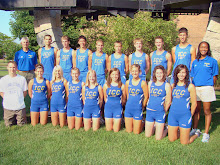1. Start the day with breakfast. This jump starts the metabolism and enhances energy levels throughout the day (which also makes you more effective in the classroom.)
How do I make time for this?
a. A bowl of low-sugar, high fiber cereal, plus a glass of orange juice.
b. A glass of OJ when you get up and trail mix on the way to school. This works during the day, too, if you don’t have time for lunch.
c. A peanut butter and jelly sandwich prepared the night before.
2. Eat Frequently. Several small to moderate-sized meals during the day are more effective than one large one.
Strategies:
a. Pre-plan with nutritious snacks in your backpack (e.g., Trail mix, apples, fig newtons, etc.). Avoid junk food from the vending machine.
3. Switch to whole grains.
Strategies:
a. Snack on whole grain cereals or popcorn (air popped or microwaved; no butter) instead of pretzels, chips, or candy.
b. Eat instant oatmeal packets for breakfast.
c. Eat lots of fresh fruit, raisins, or fruit yogurt.
d. Avoid white bread.
e. Eat brown rice or wild rice rather than white rice.
4. Lower dietary fat consumption. Some fat is ok, but high levels can be bad. Switch to lower-fat versions. Fatty foods are digested slowly and can cause a feeling of sluggishness. Avoid trans fats.
Strategy: Cut fried foods out of your daily routine. Anything deep-fried contains a lot of fat.
5. Work out with sports drinks. Carbohydrate ingestion during exercise in addition to good hydration enhances performance. If you are like me and can’t tolerate anything but water during training, do what I do and mix a sports drink 50:50 with water. It’s much easier on the stomach.
6. Refuel after Exercise. Muscles are especially good at taking up carbohydrates mixed with a little protein during the period immediately after exercising. Stocking up on energy after today’s workout can be a great way of preparing for tomorrow’s workout. The key ingredients of a good post-exercise refueling snack are fluid, carbohydrates, and a little protein. Good examples are trail mix and a sports drink, or a banana with yogurt and fruit juice. Tip: Keep a supply of refueling snacks in your sports bag for after practice.
7. Include enough iron. Iron is involved in the formation of hemoglobin, a protein that helps supply oxygen to cells. Iron deficiency is common among athletes.
Solutions:
a. East beef three times a week. Beef is a great source of iron.
b. Eat cereals fortified with iron at a level of at least 40% of the Daily Value.
c. Drink lots of orange juice. Vitamin C helps the body absorb iron.
8. Avoid “Energy” Supplementation. Many energy drinks, bars, and tablets contain caffeine and herbal stimulants that give you the perception of more energy, but do not actually give you more energy. Some actually contain unsafe levels of stimulants that can cause gastrointestinal problems and cardiovascular issues.
What to do:
a. Try to go to bed at the same time every night and im for seven or more hours of sleep.
b. Take in enough carbohydrates during the day. This is the true source of energy for exercising muscles.
c. Avoid caffeinated energy drinks.
Reference: Rockwell, Michelle “Small Changes, Big Gains”
Coaching Management. Vol 15, No. 8, pp. 27-32.







